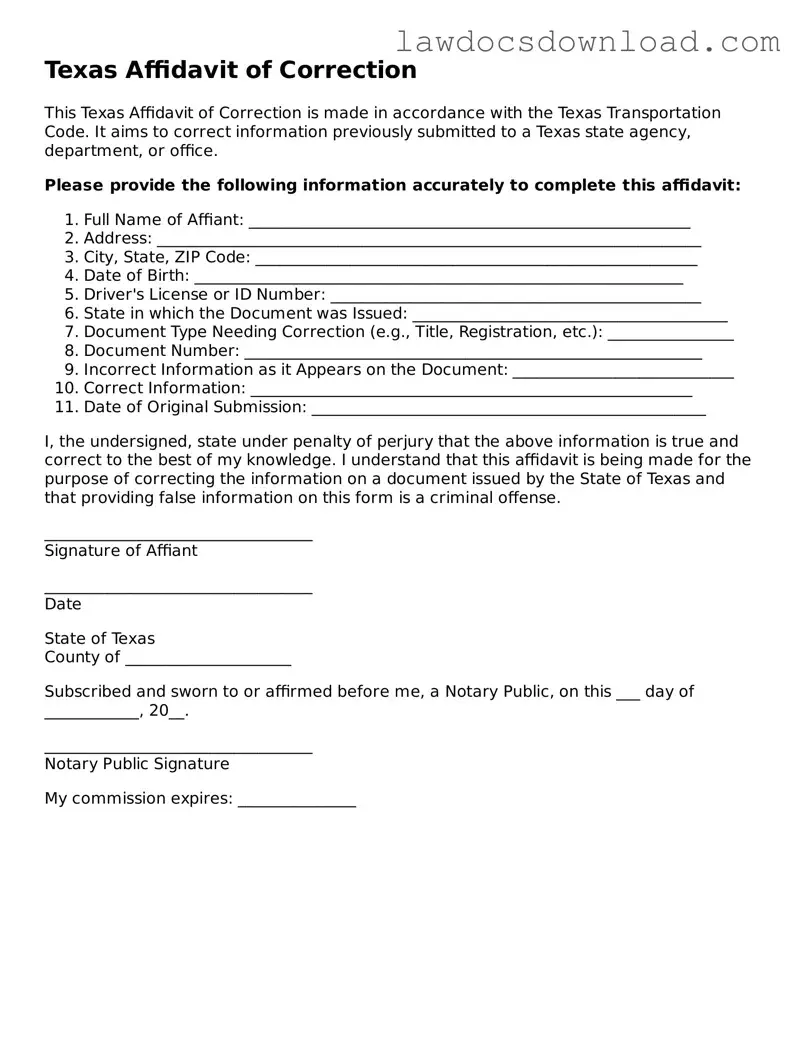Texas Affidavit of Correction
This Texas Affidavit of Correction is made in accordance with the Texas Transportation Code. It aims to correct information previously submitted to a Texas state agency, department, or office.
Please provide the following information accurately to complete this affidavit:
- Full Name of Affiant: ________________________________________________________
- Address: _____________________________________________________________________
- City, State, ZIP Code: ________________________________________________________
- Date of Birth: ______________________________________________________________
- Driver's License or ID Number: _______________________________________________
- State in which the Document was Issued: ________________________________________
- Document Type Needing Correction (e.g., Title, Registration, etc.): ________________
- Document Number: __________________________________________________________
- Incorrect Information as it Appears on the Document: ____________________________
- Correct Information: ________________________________________________________
- Date of Original Submission: __________________________________________________
I, the undersigned, state under penalty of perjury that the above information is true and correct to the best of my knowledge. I understand that this affidavit is being made for the purpose of correcting the information on a document issued by the State of Texas and that providing false information on this form is a criminal offense.
__________________________________
Signature of Affiant
__________________________________
Date
State of Texas
County of _____________________
Subscribed and sworn to or affirmed before me, a Notary Public, on this ___ day of ____________, 20__.
__________________________________
Notary Public Signature
My commission expires: _______________
